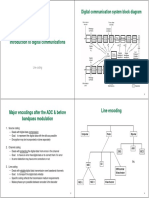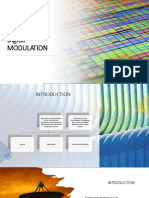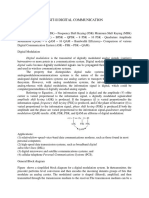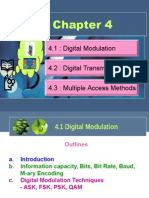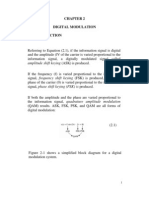0% found this document useful (0 votes)
26 views30 pagesDigital Modulation
The document discusses different types of digital modulation techniques including amplitude shift keying, frequency shift keying, and phase shift keying. It provides details on how digital signals are modulated onto analog carriers and defines key terms like bit rate, baud rate, and M-ary encoding.
Uploaded by
Keanu Lloyd BerceroCopyright
© © All Rights Reserved
We take content rights seriously. If you suspect this is your content, claim it here.
Available Formats
Download as PDF, TXT or read online on Scribd
0% found this document useful (0 votes)
26 views30 pagesDigital Modulation
The document discusses different types of digital modulation techniques including amplitude shift keying, frequency shift keying, and phase shift keying. It provides details on how digital signals are modulated onto analog carriers and defines key terms like bit rate, baud rate, and M-ary encoding.
Uploaded by
Keanu Lloyd BerceroCopyright
© © All Rights Reserved
We take content rights seriously. If you suspect this is your content, claim it here.
Available Formats
Download as PDF, TXT or read online on Scribd
/ 30















